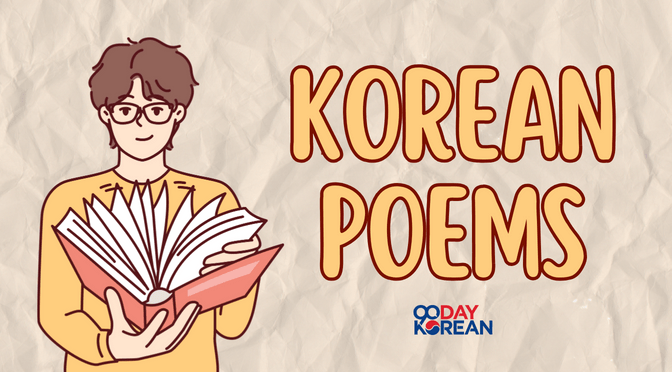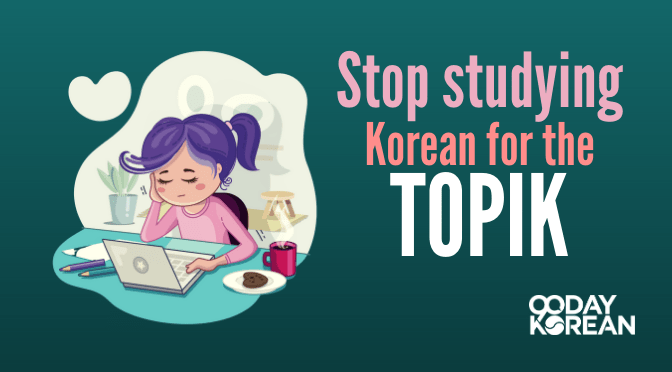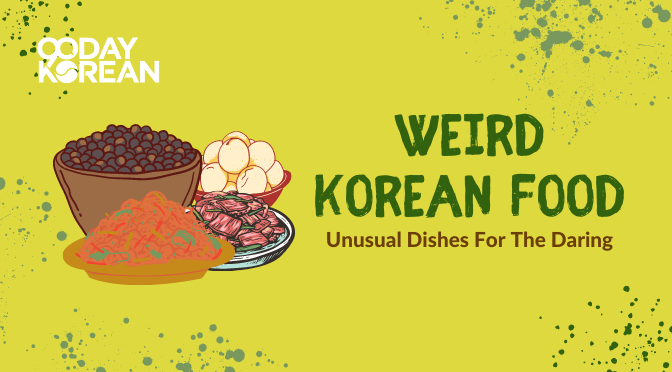Just like all of the world’s languages and cultures, Koreans also enjoy poetry and Korean poems.
As poems are an old and interesting part of Korean culture and artistry, just like elsewhere, you will want to educate yourself on the matter. Besides, Korean poems can also be fun to read, as well as useful for Korean language practice!
Now, are we ready to learn some more about poems?
Contents
What is “poem” in Korean?
The word for “poem” in Korean is as simple as 시 (si). The adjective for describing something as poetic is 시적인 (sijjeogin). The word for a person who writes poems is 시인 (siin).
If you were focused during your school’s literature classes, you may already know there’s a slight difference between poetry and poems. But if not, then don’t worry, as we’ll also go over what this means, although the article’s focus will be specifically on poems.
“Poetry” in Korean
Now, the word for “poetry” in Korean is also 시 (si). Thankfully, there are two other common words for it as well, and we’ll focus on those in this lesson to make it less confusing for you.
The second word for “poetry” in Korean is 시가 (siga). This also means “poetry” and “verse.”
운문 (unmun) also means “poem,” “poetry,” and “verse.” And 시학 (sihak) means “study of poetry.”
And “a collection of poems” is called 시집(sijip).
Korean poetry
Korean poetry refers to poetry that has been written or performed in the Korean language. It is quite common for traditional Korean poetry to be sung during a performance. Originally, the majority of Korean poetry was written in hanja. From the 20th century onward, it has become increasingly common to write poetry in Hangeul.
Classical Chinese has also held a lot of influence over Korean poems. This is understandable, as hanja are simply what Chinese characters are called in Korean, and the two countries have had linked cultures since ancient Korea times. While Korean poems are distinctive from classical Chinese ones, they share many similarities in their form and style.
Korean poetry dates back to the time of the Three Kingdoms. Since those days, it has been an integral and irreplaceable part of Korean literature and art. It is one way that depicts the beliefs, traditions, and values that uphold Korean society and culture.
Different types of Korean poem
Korean poems and poetry can be divided into two categories: traditional and modern. First, let’s go over traditional Korean poetry.
Traditional Korean Poems
Traditional Korean poems and poetry can be divided further into three different forms: sijo, gasa, and hyangga. They each have distinctive features, but all provide an excellent reflection of old Korean society.
The first form of a traditional poem is 시조 (sijo). This type of form comes with a strictly three-line structure, with a syllable count between 44 and 46. These poems usually pack in quite a lot of emotion, covering anything between joy and regret.
The second type of traditional Korean poem is called 가사 (gasa). These poems are longer, and they often tell a story of some kind. These stories then draw and mix elements from history, mythology, and folklore.
Finally, the third form of a traditional poem is 향가 (hyangga). This is the oldest form of Korean poetry. The themes are typically religious or philosophical, and local dialects and expressions are commonly used. Its structure is composed of repetition, as well as a specific 7-9-9-7 syllable formation. The intention behind this is to make the poem both memorable and expressive.
Modern Korean Poems
Modern Korean poetry, on the other hand, is not divided further into subcategories. They are highly regarded for their creativity and expressiveness. Modern Korean poetry came out to be just as the Korean society was undergoing a lot of changes, including industrialization, westernization, and political transformations.
During this era, poets began to experiment with different styles, forms, and themes, ones that were not yet commonly seen in Korean poems. For example, social and political issues became a big part of Korean poetry through these modern poems. In other words, modern poems are often far more critical than what traditional poems have sought to be.
Additionally, nature and beauty have also been big themes in modern Korean poems. Korea’s incredible landscape does provide plenty of inspiration for poems, after all. Nature has often also gone hand in hand with spirituality in the poems.
Finally, the poet’s personal experiences and emotions are not an uncommon theme seen in modern-era poetry.
List of Notable Korean Poets
Below, you can find a list of notable Korean poets and a short explanation of the time they lived in and the type of poems they wrote or currently write.
최영미 (Choe Yeongmi)
A female poet representing modern poetry, having been born in 1961, Choe is not one to shy away from topics that may cause controversy. For example, she was noted as the starter of the MeToo movement in Korea when she wrote a highly personal and heartbreaking poem related to the matter.
김소월 (Kim Sowol)
Although he only ever published one poetry collection in the duration of his short life, back in 1925, his poems are considered notable. His style of poetry has been described as similar to old Korean folk songs.
서정주 (Seo Jeong-ju)
Having lived between 1915-2000, Seo Jeong-ju is seen as the founder of modern Korean poetry. Not only that but it is thought among most people that he is one of the best Korean poets of the 20th century and was also nominated for the Nobel Prize in Literature an astounding 5 times.
허난설헌 (Heo Nanseolheon)
Heo Nanseolheon is an accomplished female poet and painter who lived during the Joseon dynasty. Sadly, many of her poems were burned upon her death by her request. However, more than 200 poems survived, enough for a collection of her poems to be released in the early 1900s. Her poems typically followed Chinese styles for poems.
조지훈 (Jo Jihun)
This poet was born in 1920 when Korea was still heavily under Japanese rule. His poems are considered to contain elements of classical beauty and tranquility. He himself thought that freedom of the individual is what poetry is born out of.
최정례 (Choe Jeongrye)
Choe Jeongrye was a modern female poet who has won numerous awards and prizes, as well as been featured in multiple magazines in South Korea, Japan, and the United States. Many of her poems were related to memory and time, with her writing style simple and straightforward.
이색 (Yi Saek)
Having lived in the 1300s, during the time of Goryo, he was one of the country’s most important figures of culture in his time. He even opened up the academy that educated those who were to become the founders of the Joseon Dynasty.
균여 (Kyunyeo)
Living in Goyro in the 900s, Kyunyeo was a Buddhist monk who also wrote many poems in his time. He is the poet of Songs of the Ten Vows Samantabhara, which has been dubbed as the first collection of poetry that was written in the Korean language.
김승희 (Kim Seung-hee)
Another female poet in current-day Korea, she has produced many highly regarded poems, especially in her later career.
Examples of Korean poems
Below, you can find a list of poems expressing some examples of what kind of poems you can find in Korean poetry, along with their English translations.
서른, 잔치는 끝났다 (seoreun, janchineun kkeunnatda) – 최영미 (Choe Yeongmi)
Translation: At Thirty, the Party is Over
진달래꽃 (jindallaekkot) – 김소월 (Kim Sowol)
Translation: Azaleas
국화옆에서 (국화옆에서) – 서정주 (Seo Jeong-ju)
Translation: Beside the Chrysanthemum
승무 (seungmu) – 조지훈 (Jo Jihun)
Translation: The Nun’s Dance
잠의 들판으로 (jamui deulpaneuro) – 최정례 (Choe Jeongrye)
Translation: Towards the Field of Sleep
그림속의 물 (geurimsogui mul) – 김승희 (Kim Seung-hee)
Translation: The Water in the Painting
How can poems help in learning Korean?
There are a few things to consider about how helpful poems are for Korean studies. For one, Korean poems are an excellent insight into Korean culture and the authors’ minds, even when not learning new words or grammar structures. Even so, Korean poems also teach vocabulary and language structures.
Reading poems can inspire Korean learners to get more creative with the language. Writing poems themselves is a great way to learn to be expressive with the vocabulary and grammar that the student knows by now. Thanks to the short length of poems, they are also good as reading exercises.
Finally, because poems are such a versatile subject, they are bound to be an interesting learning method for many.
Below, you can find a list of vocabulary that is related to poems and poetry.
| English | Korean |
|---|---|
| Song | 가곡 (gagok) |
| Folk song | 민요 (minyo) |
| Verse | 운문 (unmun) |
| Free verse | 자유시 (jayusi) |
| Chorus | 후렴 (huryeom) |
| Haiku | 하이쿠 (haiku) |
| Rhyme | 운 (un) |
| Rhythm | 운율 (unyul) |
| Prose | 산문 (sanmun) |
| Rhetoric | 미사여구 (misayeogu) |
| Expression | 표현 (pyohyeon) |
| Alliteration | 두운 (duun) |
| Assonance | 음의 유사 (eumui yusa) |
| Epigraph | 비문 (bimun) |
| Blank verse | 무운시 (muunsi) |
| Rhyme scheme | 압운 형식 (abun hyeongsik) |
| Theme | 주제 (juje) |
| Sonnet | 소네트 (soneteu) |
| Serenade | 세레나데 (serenade) |
| Stanza | 스탠자 (seutaenja) |
Below, you can find some sample sentences that may make memorizing some of this vocabulary easier.
언제부터 시를 써왔나요? (eonjebuteo sireul sseowannayo?)
Since when have you been writing poetry?
가장 좋아하는 시인은 누구예요? (gajang joahaneun siineun nuguyeyo?)
Who is your favorite poet?
한나 씨의 시집에 시 몇 편 있어요? (hanna ssiui sijibe si myeot pyeon isseoyo?)
Hanna, how many poems are in your collection of poetry?
그 작품은 운문으로 쓰여졌어요. (geu jakpumeun unmuneuro sseuyeojyeosseoyo.)
The work was written in verse.
내 시의 주제는 유년시절의 집이야. (nae siui jujeneun jeoui yunyeonsijeol jibiya.)
The theme of my poem is my childhood home.
Wrap Up
Do you like poems? Have you ever written or read them? Did you find learning about Korean poems interesting to you? Is the poem written by your favorite Korean poet part of the list? Let us know more below in the comments! Next, you may want to learn about Korean folktales!





